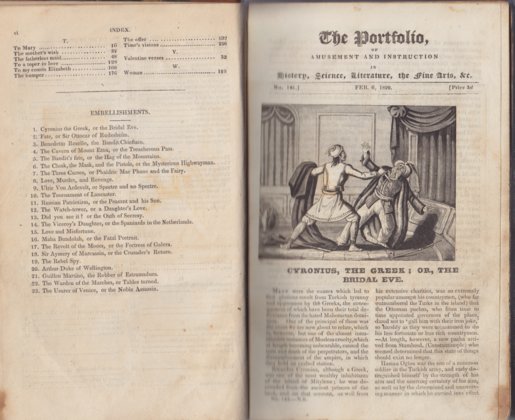Narrative
Price Point
12. Price: 3d. per issue
The working classes did not read only fiction or only to be amused. The Portfolio of Amusement and Instruction in History, Science, Literature, and the Fine Arts (1829) provides one example of a later collection containing ‘original essays, biographical memoirs, historical narratives, topographical descriptions, novels, tales, anecdotes, select extracts from modern authors, poetry, original and selected, the spirit of the public press, discoveries in the arts and sciences, domestic hints of utility, &c.’; it is not unlike encyclopedias, ‘cabinets’ and other multi-volume collections aimed at upmarket readers.
To summarize thus far: working-class people had access to a wide variety of literature at the price of sixpence or less. Ballads, story sheets, and chapbooks enabled access to traditional songs and folk tales as well as adaptations of modern literature; serialized novels in pamphlet form furthered the dissemination of complete new novels by making payment in instalments possible; similarly, multi-issue collections made a broader range of amusing and instructive literature available. Publishers altered the format and content of older and new works of literature, responding to and creating the growing, fragmented market for downmarket reading in the Romantic period.













